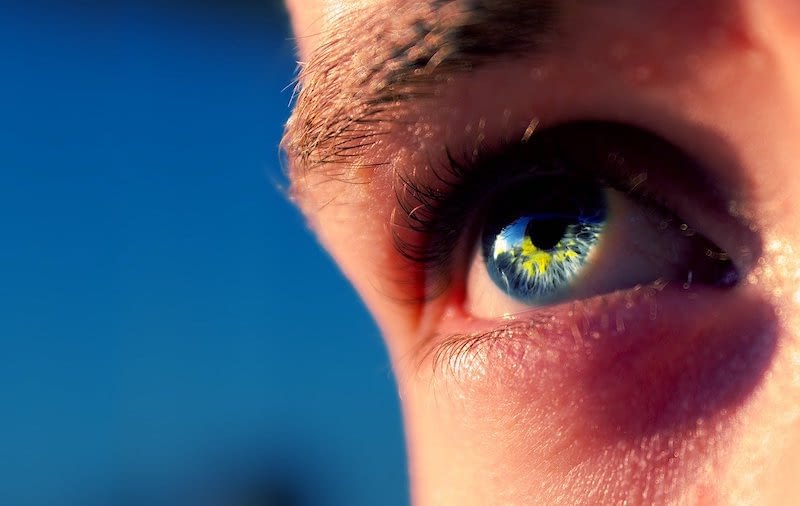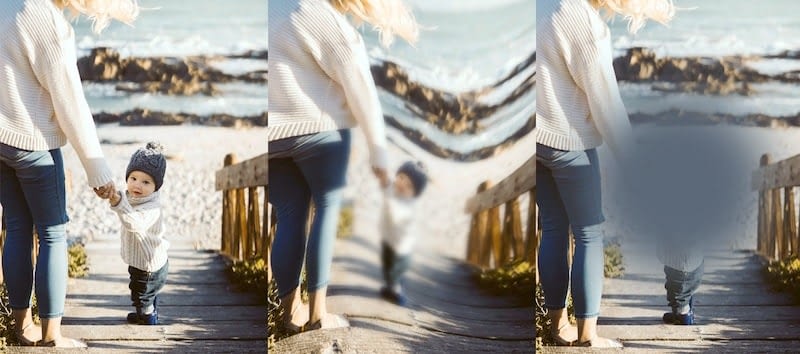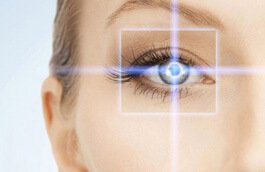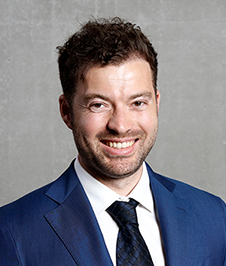PROTECT YOUR EYES IN THE SUMMERTIME AND IN THE SUN
The days are getting longer, the sun is shining and the mood is rising. So that you can enjoy sunny spring days and the wonderful summer carefree, you should not only protect your skin from UV rays, but also your eyes! Because without suitable eye protection in the form of sunglasses with UV protection, sunlight can cause acute and permanent damage.

THE UV LIGHT FROM THE SUN IS HARMFUL TO THE EYES
Without eye protection, looking directly into the sun due to the high level of UV exposure can damage the retina within seconds and cause permanent loss of vision. But indirect sunlight can also damage the eyes.
The healthy eye has a kind of integrated sun protection in which the cornea and the eye lens absorb UV-A, UV-B and UV-C – but only slightly more than half of the radiation. The rest, together with the blue light, of which only around ten percent is absorbed, reaches the retina, namely to the point where sharp vision is located: the macula lutea, also known as the yellow spot. The harmful radiation affects the retina and lenses and can lead to temporary and permanent damage.
Natural sun protection for the eyes is not enough
The natural automatic protective mechanisms of the pupil constriction, the sun protection of the eyebrows and wrinkles favoring increased blinking and squinting of the eyelids help for a short time. In older people, the lens of the eye has become cloudy and thus also offers some protection from direct sunlight. In areas where the harmful concentration of UV rays is particularly strong, this protection can hardly exist.
Areas in which the eyes need sun protection from sunrise to sunset are, for example, mountains and particularly sunny areas. Snow reflects around 95 percent of the solar radiation and the intensity increases with every meter of altitude. The reflection of the water or sand is also a danger to the eyes.
Temporary damage due to a lack of UV protection for the eyes
Those who do without adequate protection of the eyes from sunlight run the risk of temporary and chronic damage. The most common acute reactions of the eyes to too much UV radiation include keratitis and conjunctivitis.
(Photo) keratitis, also known colloquially as sunburn or snow blindness, occurs about six to eight hours after the eyes have been exposed to direct sunlight and the outer corneal layer has been damaged. (Photo) conjunctivitis, also known as conjunctivitis, can also result from exposure to sunlight. Severe pain, redness, burning sensation and tears, sensitivity to light and the feeling of having a foreign body in your eye are the consequences of both diseases, but these disappear again with medical treatment and several days of rest.
Chronic damage due to a lack of UV protection of the eyes
Permanent damage occurs, for example, when the eyes are exposed to UV rays often and for long periods of time without protection. More than a third of all age-related changes in the cornea and conjunctiva can be traced back to a lack of protection of the eyes from sunlight in the past. These include pinguecula, the cleft eyelid, the yellowish, slightly raised thickening of the conjunctiva on the whites of the eye and pterygium, the wing skin in which the conjunctiva grows over the cornea.
Cataract
Also typical age disease of the eyes at the age from 65 – 70 years such as cataract, is triggered by sunlight, which causes lens opacity through oxidative processes. The clouding of the lens of the eye leads to a progressive deterioration in vision. In the case of cataract, the light falling into the eye can only poorly penetrate the lens. As a result, the light is scattered and the retina no longer has a clear, sharp image of the environment. The outside world is perceived as through a veil, only unclear and blurred, the perception of colors and contrasts clearly decreases. Fortunately, cataract can now be treated with outpatient surgery, with nearly 15 million of such procedures performed worldwide each year.
Do you suffer from cataract? Feel free to contact us and we will consult you about your treatment options.
Contact form (click here)
Age-related macular degeneration
The elderly macular degeneration (AMD) disease is the most common cause of blindness and mainly affects people over 65 with light and therefore light-sensitive eye colors. Lipofuscin is formed when the eyes are exposed to direct sunlight. This cell protection is toxic and causes the retinal cells to die. Skin cancer can also affect the surface of the eye and the surrounding skin.

If you are affected by macular degeneration, prompt treatment is required, as any visual loss that has occurred is difficult to repair and the visual deterioration must be halted. To find out whether you suffer from macular degeneration, you can simply do a test in front of your computer or smartphone at home, this test is called the Amsler grid test.
Children and cataract patients especially need a lot of protection
In young people, the concentration of yellow pigments, lutein and zeaxanthin, which form the yellow spot, and thus the sharpness of vision is very good. The clear lenses are not yet affected by cloudiness, which protects against UV rays, and is therefore easier to attack. Children’s eyes should therefore be protected from direct UV radiation from the sun as early as possible. People who have had their opacities surgically removed for the treatment of a cataract also need special protection, as their eyes are also exposed to sunlight without protection without appropriate lenses with UV and blue light filters.
SUNLIGHT: PROTECT YOUR EYES, BUT DO IT RIGHT
Peaked caps (baseball caps), hats and, above all, larger sunglasses, which protect the eyes not only from frontal but also from side stray light, offer optimum protection for the eyes from UV radiation. The UV protection should be 400, be noted on the lenses and be worn at the latest as soon as the UV index of 3 is reached.

The UV index of the current solar radiation can be found in selected weather forecasts and in weather apps. A UV filter should also be included in normal glasses and contact lenses. UV protection is not just UV protection, however, which is why you should make sure when buying sunglasses that the UV range is below half a percent, the blue light range between two and eight percent and the infrared range below 50 percent in order to offer lasting protection.
Several glare categories are also specified in the DIN EN ISO 12312 standard. While category 1 offers hardly any protection, category 2 is recommended in moderate sunshine in our latitudes and category 3 in stronger sunlight. Category 4 is the category of choice for sun in the snow, in the mountains, by the water or in the desert. However, since the glasses are very dark, they are not suitable for driving a car. 3 to 4 is ideal for this.
We are happy to help you find the ideal eye protection for both adults and children when sunbathing and daily use.
About EuroEyes
The EuroEyes Clinic Group is a globally successful company that was founded over 25 years ago in Hamburg and has its headquarters there to this day. In addition to locations throughout Germany, EuroEyes is also represented in China and Denmark. The clinic offers patients the entire spectrum of refractive surgery for the correction of ametropia. With the most modern eye laser and lens surgery procedures EuroEyes treats over 25,000 patients with myopia or farsightedness, astigmatism,
presbyopia or cataracts every year . The interventions enable the start of a life free of glasses and contact lenses without impairment of vision and quality of vision.
Are you also interested in a treatment at EuroEyes or would you like to find out more about us? Then please contact our service center or fill in our contact form. We look forward to seeing you!
Contact form (click here)
+49 40 348 09 29 0 – service center in Germany (English, German and Chinese)
Monday to Friday: 08:00 – 19:00
Saturday: 09:00 – 14:00


















Join our Newsletter